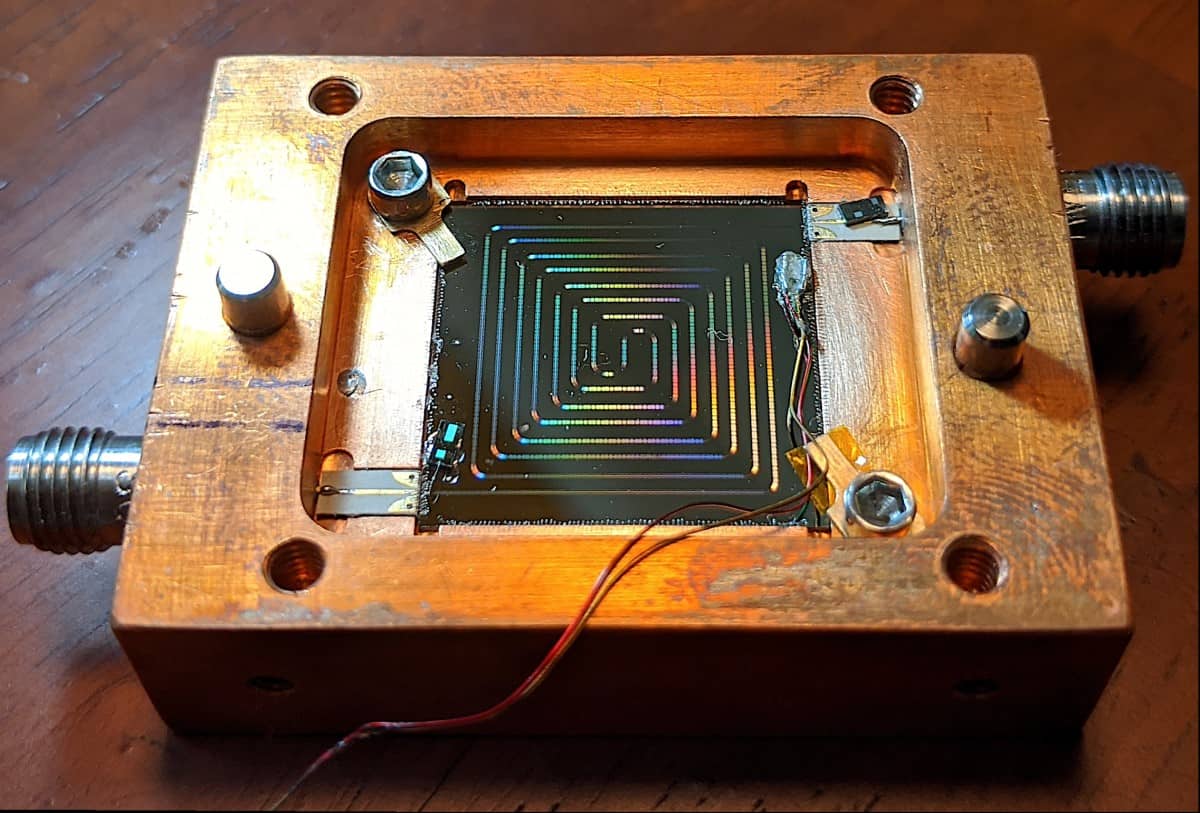
A simple miniature thermometer that can quickly and accurately measure the temperature of ultracold microwave-based devices has been built by Joel Ullom and colleagues at the National Institute of Standards and Technology (NIST) in Boulder, US. The device works by monitoring temperature-sensitive shifts in the frequency of a superconducting microresonator – rather than measuring changes in electrical resistance, which is how most conventional electronic thermometers operate. The team believes that its thermometer could soon be used to monitor the temperatures of cryogenic microwave devices including superconductor-based quantum processors.
From superconducting qubits to kinetic inductance detectors in telescopes, a growing number of microwaves devices must be maintained at sub-Kelvin temperatures to operate effectively. However, there are many ways that heat can get into these devices, so it is critical to monitor devices’ temperatures in real time. This can be done using existing low temperature thermometers, but integrating these devices in ultracold systems requires a connection to room-temperature electronics, which can introduce heat or otherwise adversely affect device operation.
Two-level systems
The new NIST thermometer instead uses existing microwave connections to monitor temperature. The device was made by coating a superconducting niobium microwave resonator with silicon dioxide. This creates “two-level systems” (TLS), which are quantum states that interact with the photons in the resonator. Crucially, the presence of the TLS changes the resonant frequency of the resonator – and this frequency shift is a function of temperature. Therefore, the temperature of the resonator can be determined by simply measuring its frequency.
Ullom and colleagues used their TLS thermometer to measure the temperature of a microwave device called a kinetic inductance travelling-wave parametric amplifier. After achieving strong coupling between the thermometer and the microwave cable used to feed the amplifier, they showed that the thermometer can measure temperatures between 50-1000 mK – with a uniform sensitivity across this range. By using the existing microwave cable to read out the thermometer, there was no need for a connection to room-temperature electronics.

Quantum thermometer could probe Bose–Einstein condensates without destroying them
Measuring just 2.5×1.15 mm in size, the thermometer can be mounted onto a chip, and can make measurements in around 5 ms – a significant improvement on the 100 ms times possible with existing thermometers.
“The thermometer allows researchers to measure the temperature of a wide range of components in their test packages at very little cost and without introducing a large number of additional electrical connections,” says Ullom.
The team says that the thermometer could be mass-produced and could soon be used to monitor temperature in a range of applications including superconductor-based quantum processors and quantum sensors.
The research is described in Applied Physics Letters.
